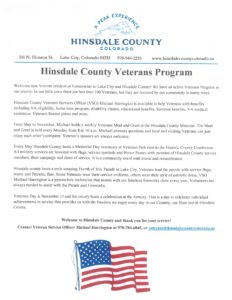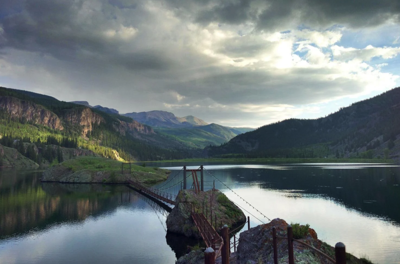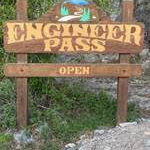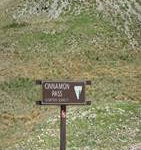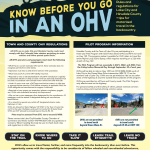Real Estate Compensation Facts

We have received questions about why brokers representing home sellers often pay the compensation of brokers representing home buyers. Here are answers to those questions and basic information every buyer and seller needs to know.
This practice has worked so well for so long because it provides the greatest economic benefits for both buyers and sellers, creates greater access and equity for first-time, low- and middle-income and all buyers and enables small business brokers to compete with larger brokers.
In fact, listing brokers paying the compensation of buyer brokers underpins local broker marketplaces, which are the primary source of information for home search sites, and serve as the driving force behind America’s efficient and accessible real estate market.
How Real Estate Compensation Works
In order to understand how real estate compensation is paid, it’s necessary to first understand the tool used in the vast majority of all home purchases: a Multiple Listing Service.
Multiple Listing Services, or local broker marketplaces, are essentially databases of all the homes for sale in a given market, maintained in most cases by local REALTOR® associations. Local REALTOR® associations also make most of this information publicly available for free, and each database often feeds home search sites.
When a seller lists a property on one of these local broker marketplaces with a listing broker, they get access to the largest pool of possible buyers that have been brought to the marketplace by buyer brokers. Meanwhile, buyers can work with any broker and see ALL homes for sale.
So where does compensation come in? “It is typical for brokers representing home sellers to compensate the buyer broker for finding a willing and able buyer which often times means the buyer does not pay their broker, resulting in more available funds for buyers to use towards the purchase of the home.” This creates a larger pool of buyers for sellers and saves sellers time and money by working with an established group of brokers. For buyers, it saves them money at closing and enables the buyer to receive professional representation.
The practice of listing brokers paying buyer brokers enables efficiency, effectiveness and accessibility for first-time, low- and middle-income and buyers of all walks of life. This practice also has been the driving force behind a thriving American real estate market. From 2010 to 2020, this approach to compensation:
- Enabled 88% of home buyers to purchase their home through a real estate broker
- Contributed to an $8.2 trillion increase in total housing wealth
- Helped 6.3 million more new buyers become homeowners
For the 90% of sellers who use a broker, they sell for 30% more on average than homes sold off the local broker marketplace as for sale by owner. That means someone working with a professional could get $390,000 for their home versus $300,000 if they tried to do it on their own.
If this practice changed and sellers’ brokers stopped paying buyers’ brokers, what would be the likely outcome?
- No centralized source of available homes for consumers or brokers
- Buyers would have to visit every broker in town to see all available homes
- Outdated home status information
- Fewer homes for buyers to choose from on real estate sites
- Unverified, inaccurate and unreliable property information
- Sellers would likely have to pay to list and advertise their properties on websites
- Buyers unable to afford brokerages would have fewer options
- Inconsistent broker information in listings across the marketplaces
- Markets would be controlled by the largest brokers
Facts About Compensation
Compensation is always negotiable. The seller decides what fee they are willing to pay for their broker’s services and how much that listing broker should offer a broker who brings a buyer to close the transaction. Compensation is always negotiable and consumers are encouraged to talk to their broker to understand and agree upon how they expect to be compensated.
The U.S. broker compensation model benefits consumers. The practice of listing brokers’ offering compensation to buyer brokers leads to brokers sharing their inventory with each other. In turn, that means sellers have access to the largest possible pool of potential buyers, and buyers have access to the greatest number of housing options in one place.
Compensation cannot be included as part of a mortgage. The vast majority of mortgage lenders do not allow compensation to be added to home loans. Listing brokers’ offers of compensation to buyer brokers gives first-time and low- and middle-income home buyers a better shot at affording a home and professional representation in the home-buying process. For many buyers, saving for a down payment is difficult enough, if buyers had to pay real estate compensation out-of-pocket on top of closing costs, it would push the dream of homeownership even further out of reach for countless people.
cannot be included as part of a mortgage. The vast majority of mortgage lenders do not allow compensation to be added to home loans. Listing brokers’ offers of compensation to buyer brokers gives first-time and low- and middle-income home buyers a better shot at affording a home and professional representation in the home-buying process. For many buyers, saving for a down payment is difficult enough, if buyers had to pay real estate compensation out-of-pocket on top of closing costs, it would push the dream of homeownership even further out of reach for countless people.
Compensation rates are determined by market forces. Compensation fluctuates over time and have notably decreased steadily in recent years. In fact, in 2020 the average real estate compensation in the U.S. fell to a new low of 4.94%, according to Real Trends.
You get what you pay for. Local MLS broker marketplaces allow small brokerages to compete with large ones and provide for unprecedented competition among brokers, including different service and pricing models. So, you can choose from many compensation models. Those are choices to consider as you prepare to make likely the single most significant investment in your lifetime.
U.S. real estate market is the world standard. The U.S. real estate model has long been viewed as the most consumer-friendly around the world. Buyers abroad are forced to wade through complex markets that require consumers to work with multiple brokerages to access fragmented inventory because listings are not shared freely in the marketplace. The result is more time consuming, impersonal and costly.
FAQs
Is there a “set compensation rate” real estate brokers charge consumers?
No. The market decides compensation rates, and compensation is always negotiable. Consumers have the choice of who they want to pay and how they want to pay them. Because of the pro-consumer local MLS broker marketplace model, and options like a success fee, there is unprecedented competition among real estate brokers, especially when it comes to the service and compensation options available to consumers.
Why not require buyers to pay compensation directly to their broker instead of the historic practice of listing brokers paying the buyer broker?
Forcing buyers to take on the additional out-of-pocket expense would cause them incredible hardship and would freeze many, particularly first-time and low- and middle-income home buyers, out from an already competitive market. That could also force home buyers to forgo professional help during what is likely the most complex and consequential transaction they’ll make in their lifetime.
How does the U.S. model compare to other, international broker marketplaces?
The U.S. approach is the most consumer-centric model. By consolidating fees and the overall process, our nation’s model simplifies the experience, provides greater certainty of success to both buyers and sellers, and provides guidelines that ensure the accuracy of housing inventory made available to real estate professionals and consumers, all at comparable or lower total costs than those in other countries.
Why should real estate professionals make the money they do in compensation when so much information is available online?
Real estate brokers provide essential guidance as consumers navigate the legal, financial and community aspects of a purchase, including everything from determining property value to negotiating the price. They also make local broker marketplaces, which online housing portals tap into, possible because of all the information they input into those databases. And REALTORS®’ annual income is just $43,330 and 88% are small businesses, a majority of which are women-owned.
How does the current approach to compensation benefit small businesses?
Access to inventory and free advertising as well as the practice of the listing broker paying the buyer brokers’ compensation incentivizes participation in these local real estate marketplaces and creates the largest, most accessible and most accurate source of housing information available to consumers. That levels the playing field among brokerages, allowing small brokerages to compete with large ones, and provides for unprecedented competition among brokers, including different service and pricing models for consumers.

